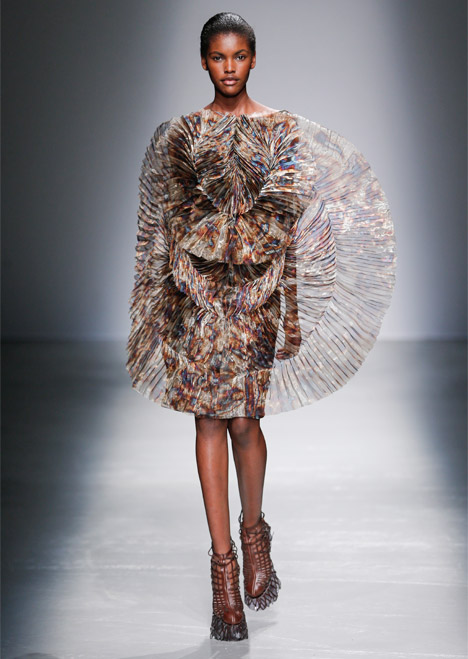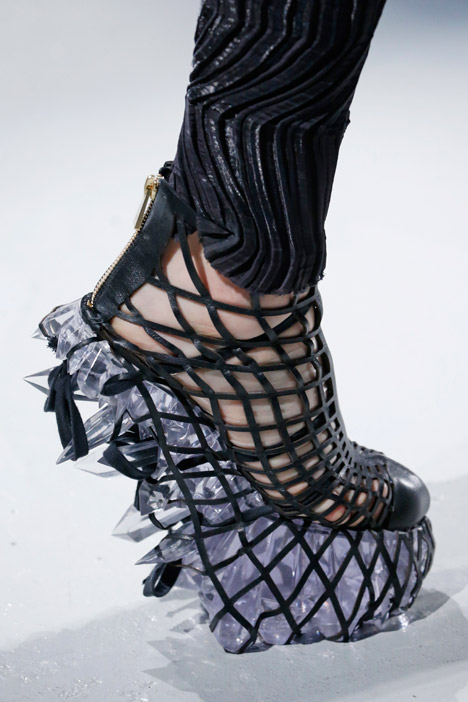At the school of innovation, nothing can escape the scope of science, not even fashion. Dutch designer Iris van Herpen has been pushing the boundaries of fashion ever since she graduated as a fashion designer from the Arnhem school, ArtEZ, in 2006. You might recognize her creations on the cover of Bjork’s Biophillia album or in Beyoncé’s music video, “Mine.”
Van Herpen releases two collections per year, each of which is always based on some sort of scientific or natural process. Her most recent collections for fall/winter 2015-16 and spring/summer 2016 feature works inspired by terraforming and the living tree bridges of India, respectively. Basically, anyone wishing they could live their life as a science fiction film should aspire to dress like a van Herpen model.
Terraforming, a term more common to the realm of science fiction, is the process of transforming a planet to closer resemble Earth, usually with the intention of sustaining life. In her fall collection Hacking Infinity, van Herpen plays with the changing terrain of the human body by using light materials that move with the body as well as hard, geometric shapes that alter it’s silhouette. The circle shows up repeatedly throughout the collection as a tribute to van Herpen’s planetary inspiration, yet the sheer materials also allow for the shape of the human body to show through the garments.
Unique to this collection is a fabric containing weaves of extremely light, translucent stainless steel that have been hand burnished to create a nebula-like pattern of colors. Any color seen on these garments is the result of the fabric being precisely burned at varying temperatures. As if van Herpen’s fashion couldn’t get any more geek chic than metal dresses, she is also known for using 3D printing in many of her masterpieces. The shoes from Hacking Infinity were created in conjunction with Japanese designer Noritaka Tategana and feature cantilver heels with soles made up of stacked, 3D-printed crystals with laser-cut leather stretched over the top.
Just as exciting is van Herpen’s newest collection for spring, Quaquaversal, which was inspired by the tangled mazes of tree roots that have been used to grow living bridges in India. Once again she uses 3D printing to create intricate meshes out of geometric tessellations. At the center of the show, however, was Game of Thrones’s Gwendoline Christie, who laid on her back on a round concrete table while a dress was 3D printed live on her body. The mechanical arms weaving the mesh around her were magnetically grown by the Amsterdam based artist, Jolan van der Wiel.
From perhaps one of the most interesting and boundary-breaking designers of today, Iris van Herpen’s work covers a variety of background from fashion to science and technology to art. Though perhaps a bit too far from Stevens, her work can finally be viewed stateside at the Atlanta, Georgia High Museum of Art. The exhibit includes 45 of her works from 15 collections that include such innovative materials as umbrella ribs, boat filament yarns, metal gauze and, of course, 3D printing.

